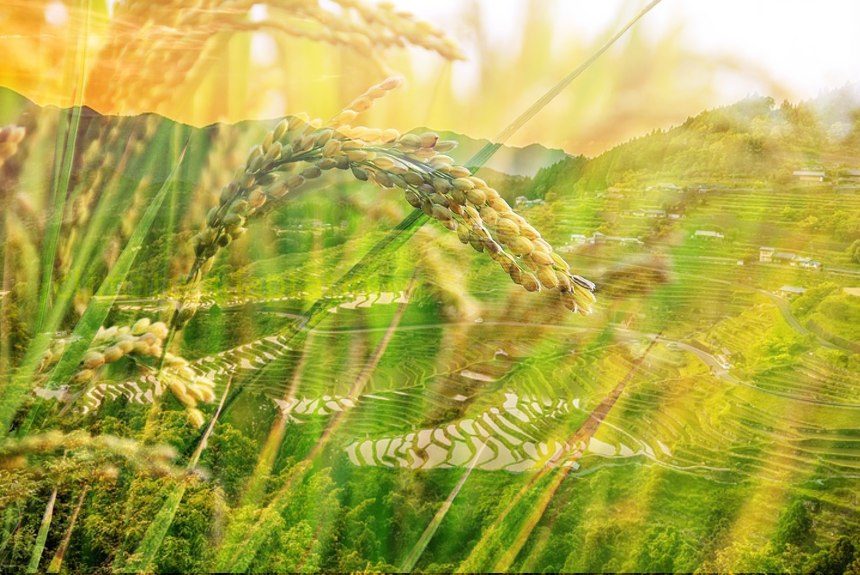Applying nuclear science and technology can help farmers, especially in water-scarce and climate-vulnerable regions, continue growing and producing food.
During the United National High-level Political Forum (HLPF) on Sustainable Development virtual meeting, experts from Malaysia, Peru, Nigeria and the International Atomic Energy Agency (IAEA) discussed how nuclear science supports the development of drought and salinity-resistant crops.
A climate-smart approach to soil and water management can increase food production and build resilience against the changing climate.
According to the article from the IAEA, various groups, including mountain communities, small-scale farmers, and vulnerable populations, have increased their food security and improved their use of water through the practice of climate-smart agriculture aided by nuclear science.
Two thousand vulnerable farmers living in a camp for internally displaced people near Abuja were trained in drip irrigation, a method of saving water without a decrease in yield made possible by applying isotopic techniques.
This technique can determine the amount of water required by the plants and the optimal times for irrigation. Displaced men and women can continue producing food, conserving water, and generating income for their families.
Farming in the highland Andean regions of Peru has been challenging due to poor soil quality and climate change. However, with the development of new varieties of barley that are tolerant of drought, low temperatures, and diseases, small-scale farmers were able to generate close to US$18 million for their produce.
In Malaysia, nuclear science has produced two new mutant rice varieties, which allowed rice production to continue amid water scarcity and soil degradation. This new rice variety has increased the crop yields and incomes of 50,000 Malaysian farmers.
Through nuclear and isotopic techniques, scientists and researchers can study how climate change affects the quality of soil and groundwater recharge rates and measure air contaminants. Isotope hydrology allows researchers to study water, its molecules and components, where it came from, how long it travelled, how old it is, and much more.
A greater understanding of resources can help decision-makers create better policies supporting and prioritising sustainability. This information can also help farmers to manage resources better and adapt to climate change.
Food security and political stability play an essential role in human survival. According to the ANS, around 821 million people worldwide go to bed hungry at night, and 3.1 million children die of malnutrition. Increases in population, insects, and bacteria all contribute to loss in food production that can lead to poverty. Extreme events due to climate change are another threat to food security and food production.
For more than 50 years, the Food and Agriculture Organisation (FAO) and the IAEA have been working together to improve agricultural practices. Recently, both institutions created a joint FAO/IAEA Centre of Nuclear Techniques in Food and Agriculture.
These are some of the things that the Centre does to enhance agriculture and food security: Detection, control and prevention of transboundary animal and zoonotic diseases, using nuclear isotopes to track and monitor soil quality will determine what type of fertiliser and how much to use, using sterile insect technique (SIT) to suppress or eradicate established insect pests, food irradiation to eliminate harmful residues and contaminants in food products, and crop breeding to develop varieties that can adapt to climate change.
Innovative technologies can improve food production, the environment, and nutrition, especially in countries and regions vulnerable to climate change and natural disasters. Nuclear technologies can provide many opportunities to help these countries’ climate adaptation programs.
Source Citation:
How Nuclear Techniques can Support Climate Adaptation and Post-COVID Recovery (2021, July 16). IAEA. Retrieved from https://www.iaea.org/newscenter/news/how-nuclear-techniques-can-support-climate-adaptation-and-post-covid-recovery
Agricultural Applications. (2018). ANS. Retrieved from http://nuclearconnect.org/know-nuclear/applications/agriculture
Five ways nuclear technology is improving agriculture and food security. (2021, March 30). Food and Agriculture Organization of the United Nations. Retrieved from http://www.fao.org/fao-stories/article/en/c/1390726/



Leave a Reply